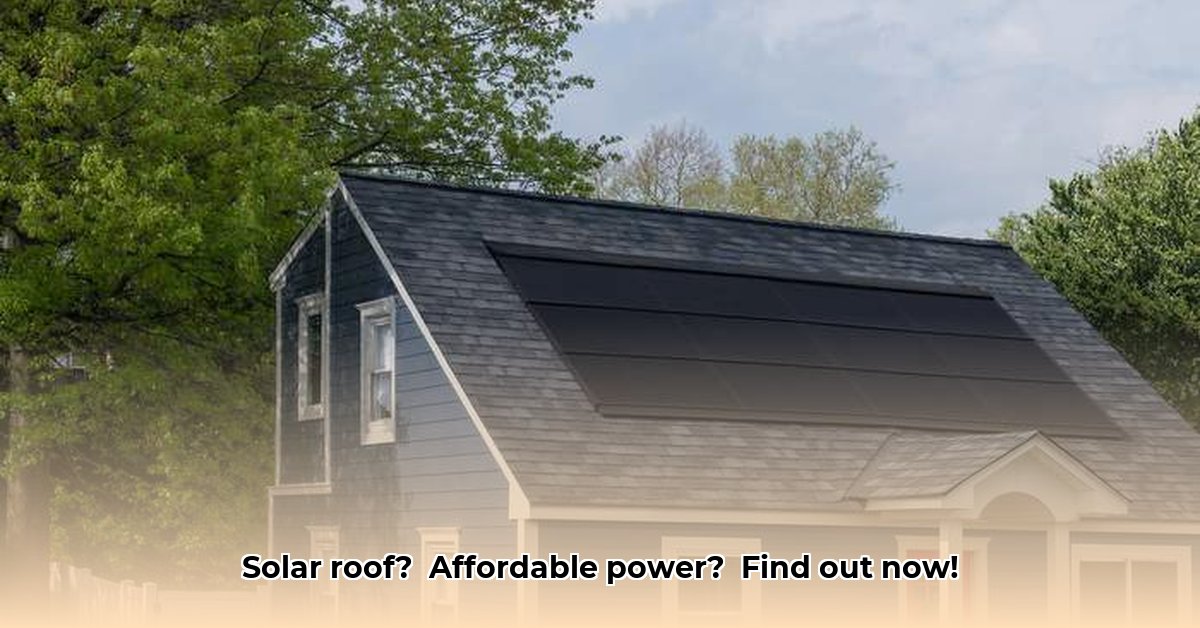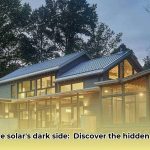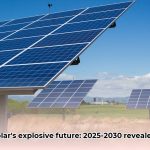Are you considering solar power but feeling overwhelmed by the complexity and visual impact of traditional systems? Imagine a roof that’s both aesthetically pleasing and generates clean energy – that’s the promise of the GAF Energy Solar Roof. This comprehensive guide breaks down everything you need to know: how it works, its cost-effectiveness, the pros and cons, and whether it’s the right choice for your home. We’ll explore the installation process, compare it to conventional solar panels, and consider expert opinions and homeowner experiences. Furthermore, we’ll analyze how this system can lead to long-term savings and potentially increase your home’s value. Whether you’re a homeowner, investor, or simply curious about solar energy, this guide will provide the insights you need to make an informed decision about the GAF Energy Solar Roof. To understand future solar costs, check out this resource on future solar costs.
GAF Energy Solar Roof: Is It Truly an Affordable and Aesthetically Pleasing Solar Solution?
Tired of the clunky look of traditional solar panels? Want to embrace solar power without sacrificing your home’s curb appeal? The GAF Energy solar roof offers a compelling alternative. This isn’t your traditional solar panel setup; instead, energy-generating shingles seamlessly integrate into your roof, providing clean energy without detracting from your home’s aesthetic. It’s a potential game-changer, blending both form and function.
How This Innovative Solar Shingle System Works: A Detailed Look
The technology behind the GAF Energy Timberline Solar roof lies in its advanced solar shingles. These aren’t ordinary roofing materials; they’re engineered with highly efficient mono PERC (Passivated Emitter and Rear Cell) solar cells. These cells are designed to maximize the conversion of sunlight into electricity. The system is “grid-tied,” meaning the electricity produced is fed directly into your home’s electrical system, reducing your reliance on grid power. Installation is streamlined compared to standard solar panel systems, resembling the process of installing regular roofing shingles. It’s essentially a new roof and a solar power system combined. The innovative design makes for a faster, more seamless installation process.
Cost vs. Efficiency: A Deep Dive into the Financials
A major selling point of the GAF Energy solar roof is its competitive pricing. GAF aims to match the total cost of a new roof replacement combined with the installation of separate solar panels. This offers significant appeal to homeowners looking to upgrade their roofs and adopt solar energy simultaneously. However, it’s important to consider the long-term efficiency of these systems. While initial efficiency figures are promising, continuous monitoring and data collection are essential to accurately compare their performance against traditional solar panels over time. Think of it as a long-term investment – understanding the key performance indicators (KPIs) and tracking them over years will allow you to accurately assess the system’s true long-term value.
Weighing the Pros and Cons: A Balanced Perspective
Here’s a comprehensive look at the advantages and disadvantages of the GAF Energy Solar Roof:
| Advantages | Disadvantages |
|---|---|
| Aesthetically pleasing – seamlessly integrates into your roof, enhancing curb appeal | Initial cost may be higher compared to traditional roofing and separate solar panel installation |
| Streamlined installation – often faster and easier than traditional solar panel systems | Limited availability in certain geographic locations |
| Potential long-term savings on electricity bills | Requires more long-term data on energy production, efficiency, and durability |
| Utilizes cutting-edge mono PERC solar cell technology | Suitability may vary based on roof characteristics (angle, orientation, and type) |
| Single warranty covering both the roof and solar components | Potential impact on insurance premiums should be considered |
| May increase home resale value | Performance can be affected by shading from trees or nearby buildings |
Who Could Benefit Most From the GAF Solar Roof? Targeted Benefits
The GAF Energy solar roof presents compelling advantages for various stakeholders:
- Homeowners: A stylish and eco-friendly solution to reduce energy bills and increase home value. It simplifies the process of getting a new roof and solar energy in one integrated project.
- Roofing Contractors: An opportunity to expand service offerings and tap into the growing demand for renewable energy solutions. This can lead to increased revenue and business growth.
- GAF Energy: A chance to solidify its position as a leader in the solar roofing market, capturing a significant share of the rapidly expanding renewable energy sector.
- Investors: A chance to support innovation in sustainable technology and promote a cleaner energy future. Investing in GAF Energy contributes to a more environmentally conscious world.
What Does the Future Hold for GAF Energy Solar Roofs? Looking Ahead
GAF Energy faces challenges such as expanding its market presence and gathering comprehensive long-term performance data for consumer assurance. The company’s future plans include enhanced battery storage integration and exploring applications for commercial buildings. Key to their long-term success will be expanding into new markets, optimizing pricing strategies, and consistently delivering on its promise of long-term value. It will be crucial for GAF Energy to adapt effectively to evolving energy regulations and incentive programs.
Ready to Make the Leap to Solar? Essential Considerations
The GAF Energy solar roof offers a compelling option for those seeking an attractive and efficient solar power solution. However, it’s important to conduct thorough research before making a decision. Consult with a certified solar installer to determine if the system is suitable for your specific home and energy needs. Obtain a detailed cost analysis comparing this option to traditional solar solutions and standard roof replacements. Make an informed choice based on your individual circumstances and the long-term benefits. The solar energy market is dynamic, so stay updated on the latest advancements and incentives.
In-Depth Comparison: GAF Timberline Solar Shingle Long-Term Efficiency vs. Traditional Panels
Key Takeaways:
- GAF Timberline solar shingles offer a visually appealing, integrated roofing solution with ease of installation but at a potentially higher upfront cost.
- Traditional solar panels generally provide higher energy output per square foot.
- A comprehensive cost-benefit analysis is crucial, considering factors like energy production, system lifespan, and maintenance.
- A key factor in your final decision should be an understanding of the long-term reliability and homeowner confidence.
Aesthetics vs. Efficiency: The Visual Impact and Trade-offs
GAF Timberline solar shingles undeniably have a superior aesthetic appeal, seamlessly blending into the roof and enhancing curb appeal. However, this visual advantage often comes with a higher upfront cost compared to traditional solar panel systems. The crucial question is whether the aesthetic benefits justify the financial investment. How much do you value a visually integrated solar solution? Does it align with your property’s overall aesthetic?
Understanding the Energy Equation: Quantifying KWH Output and Savings
Traditional solar panels typically offer higher energy output per square foot due to their design optimized for sunlight capture and advanced cooling mechanisms. GAF shingles, while innovative, have a fixed angle that may limit their efficiency compared to panels angled for optimum sun exposure. This difference in efficiency directly impacts your return on investment. Evaluating kilowatt-hour (kWh) production and projecting long-term energy savings is crucial. Will the lower kWh production significantly affect your monthly energy savings?
The Long Game: A Detailed Analysis of Cost, Lifespan, and ROI
A thorough evaluation of the long-term financial implications is crucial in comparing GAF Timberline solar shingles with traditional panels. Consider these factors:
- Energy Production Estimates: Calculate annual energy generation for both systems based on your location, sunlight hours, and potential shading using online calculators.
- Lifespan and Warranty: Compare the warranty terms for both systems, considering the potential costs of repairs or replacements over the lifespan of the installation.
- Maintenance Costs: Estimate the ongoing maintenance costs for each system, including cleaning, inspections, and potential repairs.
- Installation Costs: Factor in the installation costs for both systems, considering the potential complexities of retrofitting solar shingles to an existing roof.
Making the Right Choice: A Recommendation
The best choice depends on your individual priorities, preferences, and circumstances. If aesthetics and seamless integration are paramount, GAF Timberline solar shingles may be the right fit. However, if maximizing energy production and cost savings are your primary goals, traditional solar panels may be a better option.
GAF Timberline Solar Shingles: Cost Comparison for Different Roof Sizes
Key Takeaways:
- GAF Timberline Solar Shingles seamlessly integrate into a new roof, offering a unique blend of aesthetics and solar power generation.
- Their higher upfront cost and the need for a full roof replacement, however, limit widespread adoption.
- System efficiency is comparable to traditional solar panels, while installation ease lowers labor costs.
- A thorough cost-benefit analysis considering long-term energy savings and incentives is essential for homeowners.
- Understanding warranty terms and the potential impact on resale value is vital.
- Hydro Extrusions USA Leads North American Aluminum Profile Solutions - December 28, 2025
- Hydro North America Leads Aluminum Extrusion Solutions Across Diverse Industries - December 27, 2025
- Hydro Extrusion North America Provides Custom Solutions Across Diverse - December 26, 2025
















